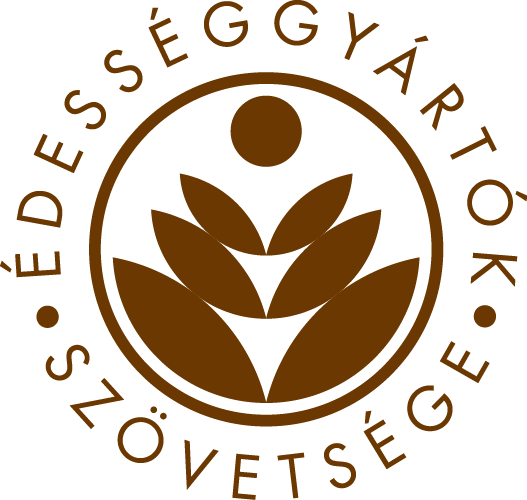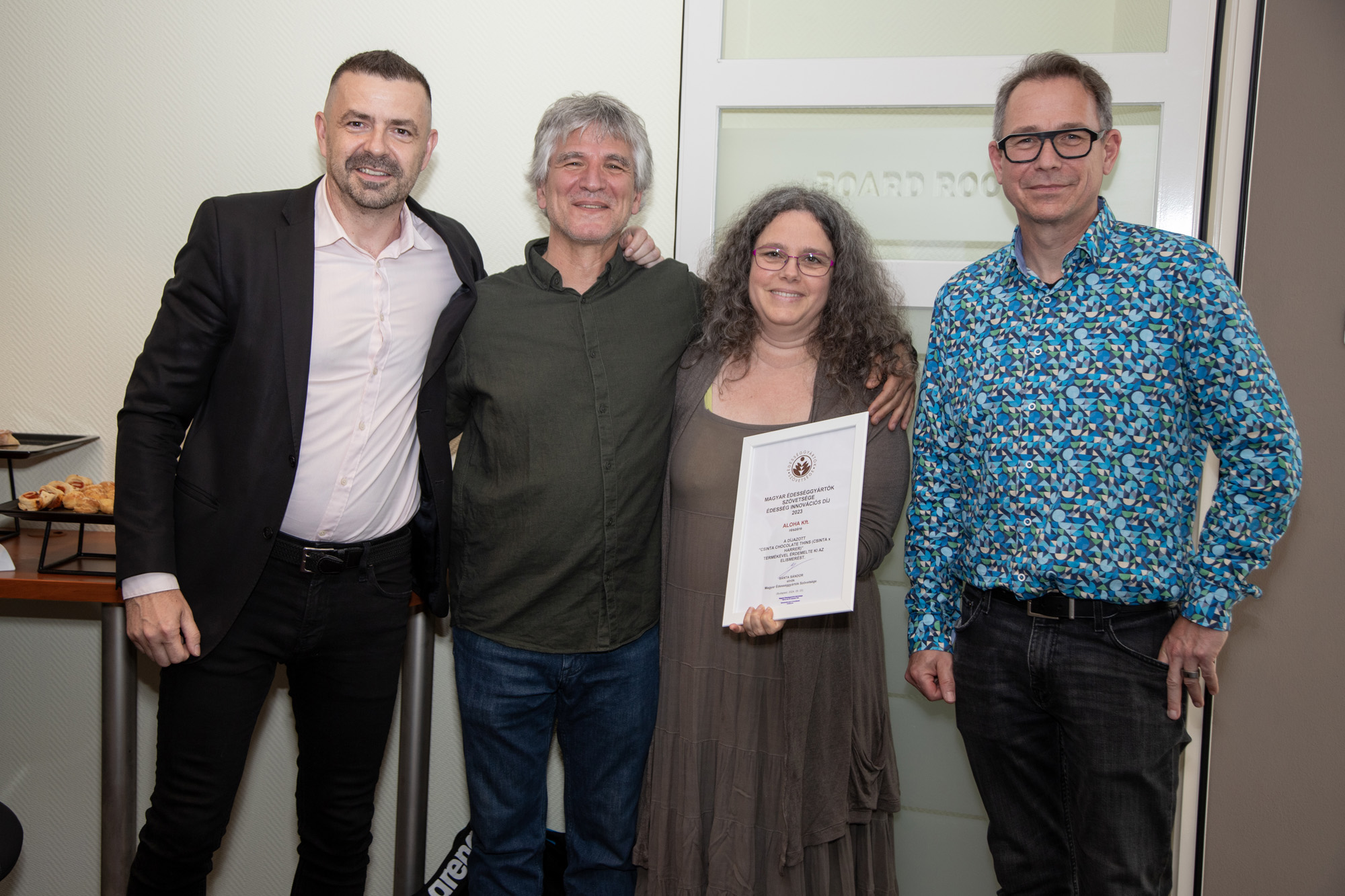On 23 May, the Confectionery Innovation Award of the Association of Hungarian Confectionery Manufacturers was presented to Csinta, a manufacturer of pure fruit snacks, for its new family of chocolate-coated dried fruit bars. We asked Péter Redő, Managing Director of Aloha Kft. in Pomáz, about the history of the products, which have a contemporary flavour, and about their future plans.
Each year, the Association of Hungarian Confectionery Manufacturers awards the prize to Hungarian entrepreneurs who have combined tradition with innovation to develop a product in the previous year that preserves the best traditions of confectionery making while responding to today’s challenges.
The idea of dried fruit sheets was born ten years ago in the kitchen of the Redő family, who were then following a raw vegan diet, where they were testing – and tasting – a range of preparing fruits, vegetables and other natural ingredients every day. They also experimented with slowly drying a thin layer of plum pulp, and the result, a leather that concentrated the flavour of the fruit, was such a hit that they took a sample to the children’s school event: an Advent market.
“The reception was so enthusiastic, not only from the students but also from their parents, that we started to develop the idea further,” said Péter Redő, “In fact, in the first wave of innovation we implemented so many ideas that we had to narrow down the product range.”
Initially the Csinta fruit leathers were made exclusively by slowly drying fruit grown on organic farms at low temperatures. Today, the range has expanded to ten different types of fruit, half of which are currently made from organic-certified ingredients. The time-consuming process allows the company to produce smaller quantities of the highest quality products. The sheets are made by drying apple and other fruit pulps – only in their natural form, with no industrial additives, not even natural additives such as extracts or pectin.
While initially they also made spicy flavoured cones, with chilli and garlic, and cones filled with dried fruit from the sheets, which found a following, they had to withdraw them from the range because they were either aimed at a too niche market or the labour-intensive production cost was not recovered.
In the spirit of joint innovation, with the investor contribution and work of friends, and then with the addition of new employees and commercial partners, and with the development of production, the Csinta products have appeared in the offering of other online stores and national chains, in addition to the company’s own webshop, offering a healthy, high quality and versatile alternative for consumers looking for snack products.
The original Csinta range is primarily a children’s favourite. Péter Redő explains that the expansion of the product range was delayed until Christmas 2023 by his perfectionism. That’s when they launched a chocolate-coated version of the fruit bars, available in cherry, apricot and ginger flavours, to wow the adult gourmet audience with something special – again, in the spirit of joint innovation.
“The top-quality dark and milk chocolate is made by the Harrer Chocolate Workshop, a multiple award-winner of international competitions, and the innovative packaging was designed by our graphic design partner Carbon Group Communication”, said Péter Redő. “The packaging also includes a quote from a well-known thinker, so that the meeting of the fruit and chocolate and its natural harmony in addition to being enjoyed by the senses can also be an experience for the spirit to inspire new ideas.”
Sándor Sánta, President of the Association of Hungarian Confectionery Manufacturers, said at the Innovation Award ceremony that it is a great pleasure to see Hungarian companies that are able to think outside the box, to design and develop products and persistently try to make the world around them a better place.
The managing director of Aloha Kft., which focuses on value creation and cooperation, revealed that in this spirit, new developments will soon appear in their own product range – and in the offerings of other companies too as a result of cooperation.



